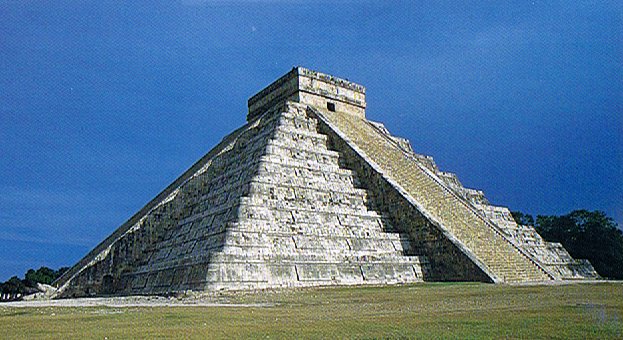The Chinese structure has 28 'stations', which is a reference
to the Moon. The face of the Full Moon identifies the position
of the Sun (the nakshatra system):
... In each of
the Nakshatras there is a 'yoga', a key star
that marks a station taken by the moon in its monthly
(twenty-seven- or twenty-eight-day course) through the
stars. (The sidereal period of the moon, twenty-seven days
and a fraction, should be distinguished from the synodic, or
phase-shift period of 29.5 days, which is the ultimate
antecedent of our month.)
In
ancient times the priest-astronomers (Brahmans) determined
the recurrence of the solstices and equinoxes by the use of
the gnomon. Later they developed the Nakshatra system
of star reference to determine the recurrence of the
seasons, much as the Greeks used the heliacal rising of some
star for the same purpose. An
example of the operation of the Nakshatra system in
antiquity can be seen in figure 6.9:
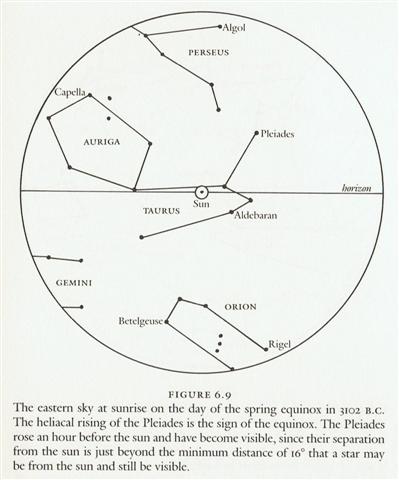
Here we see that the spring equinox
occurred when the sun was at its closest approach to the
star Aldebaran (called Rohini by the Hindus) in our
constellation Taurus. But, of course, the phenomenon would
not have been visible because the star is too close to the
sun for observation. The astronomers would have known,
however, that the equinoctial point was at Aldebaran
by observing the full moon falling near the expected date or
near a point in the sky exactly opposite Aldebaran (since
the full moon is 180º from the sun), that is, near the star
Antares ...
When the Chinese saw Nunki close to the Full Moon they would
have known the Sun was close to the region in the sky half a cycle
away, viz. at their 22nd stationn Well (μ Gemini).
22 - 14 = 8 (December 30) and June 24 (350 / 2) was the Day of
St John.
|
Egyptian
water ripples |
 |
Phoenician
mēm |
 |
Greek
mu |
Μ (μ) |
... Behind me, towering
almost 100 feet into the
air, was a perfect
ziggurat, the Temple of
Kukulkan.
Its four stairways had 91
steps each. Taken together
with the top platform, which
counted as a further step,
the total was 365. This gave
the number of complete days
in a solar year. In
addition, the geometric
design and orientation of
the ancient structure had
been calibrated with
Swiss-watch precision to
achieve an objective as
dramatic as it was esoteric:
on the spring and autumn
equinoxes, regular as
clockwork, triangular
patterns of light and shadow
combined to create the
illusion of a giant serpent
undulating on the northern
staircase ...
|
| rima heu ki te
vai |
te moko oho
mai |
te marama |
te kava |
manu rere |
|
Kava.
1. Sour; salty: vai kava, saltwater,
sea; te kava o te haíga, acrid underarm
smell; tagata kava - tagata kakara i te kava,
man with smelly armpits. 2. He-kava te
haha, to be thirsty. 3. To turn sour, to
become embittered, bad-tempered, exasperated
(used with manava): tagata manava
kava, bad-tempered, angry man. Vanaga.
Bitter, salt; vai kava, brackish water;
hakakava, to embalm; kavakava,
acid, sharp, bitter, salt, spiritous, vinegar,
poisonous, disagreeable; akavakava, to
make sharp; hakakavakava, to make acid. P
Pau.: kava, disagreeable to the taste;
kavakava, acid, sharp. Mgv.: kava, to
be bitter, sour, acid, salt. Mq.: kava,
bitter. Ta.: ava, bitter, acid, salt.
Kavahia: 1. Comfort, comfortable, to feast;
hakakavahia, comfort, comfortable. 2.
Repulsive (of food), disgusted; hakakavahia,
repulsion. Kavakava, rib; moi kavakava,
a house god G. P Mgv.: vakavaka, the
breast. Mq.: vakavaka, vaávaá,
rib. Ma.: wakawaka, parallel ridges. We
shall need all the available material in order
to determine the germ sense of this word. Sa.:
va'ava'a, the breast-bone of a bird;
fa'ava'a, the frame as of a slate. To.:
vakavaka, the side. Fu.: vakavaka,
the side below the armpit. Ha.: hoowaa,
to make furrows. In all these we may see the
idea of ridge or depression, or of both, as
primal (Rapanui, Samoa, Marquesas, Maori,
Hawaii), and as secondary the part of the body
where such appearances is common (Mangareva,
Tonga, Futuna). Churchill. Mgv.: kava,
the pepper plant and the drink made therefrom.
Ta.: ava, id. Mq.: kava, id. Sa.:
'ava, id. Ma.: kawa, a pepper.
Kavakava, a fish. Sa.: 'ava'ava, id.
Kavapui, a tree. Ta.: avapuhi, a
fragrant plant. Mq.: kavapui, wild
ginger. Sa.: 'avapui, id. Ha.: awapuhi,
id. Churchill. Mq.: ava, a small fish of
sweet water. Sa.. 'ava'ava, a small fish.
Ha.: awa, a fish. Kakava, burnt.
Sa.: 'a'ava, very hot. Churchill. |
 |
 |
 |
 |
 |
|
Ca10-15 |
Ca10-16 |
Ca10-17 (272 = 2 * 136) |
Ca10-18 |
Ca10-19 |
|
CLOSE TO THE SUN: |
|
June
16 |
17
(168) |
18 |
19
(535 = 365 + 170) |
20 |
|
υ
Aurigae (87.1),
ν
Aurigae (87.2),
WEZN (Weight) =
β
Columbae,
δ
Leporis (87.7),
TZE (Son) =
λ
Columbae
(87.9) |
Ardra-6 (The Moist One) /
ANA-VARU-8 (Pillar to sit by)
χ¹
Orionis,
ξ
Aurigae (88.1),
BETELGEUZE =
α
Orionis
(88.3),
ξ
Columbae (88.5),
σ
Columbae (88.7) |
η
Leporis (89.0),
PRAJA-PĀTI (Lord of Created Beings) =
δ
Aurigae,
MENKALINAN (Shoulder of the Rein-holder) =
β
Aurigae, MAHASHIM (Wrist) =
θ
Aurigae,
and
γ
Columbae (89.3),
π
Aurigae (89.4),
η
Columbae (89.7)
*48.0 = *89.4 - *41.4 |
μ Orionis (90.3), χ² Orionis (90.5) |
6h (91.3)
ν
Orionis (91.4),
θ
Columbae (91.5),
π
Columbae (91.6)
*50.0 = *91.4 - *41.4 |
|
DAY
87 |
88 |
89 |
90 |
91
(= 13 * 7) |
|
CLOSE TO THE
FULL MOON: |
|
Dec
16 (350) |
17 |
18 |
19 |
20
(354 = 12 * 29½) |
|
PTOLEMY CLUSTER = M7 Scorpii
(270.5),
GRUMIUM (Lower Jaw) =
ξ
Draconis
(270.9) |
RUKBALGETHI GENUBI (Bending Claw) =
θ
Herculis
(271.1),
ξ
Herculis (271.5),
ETAMIN (Head) =
γ
Draconis,
ν
Herculis (271.7),
ν
Ophiuchi (271.8) |
Cat's Eye = NGC6543 Draconis
(272.2),
ζ
Serpentis (272.4),
τ
Ophiuchi (272.9)
*231.0 = *272.4 - *41.4 |
Winnowing Basket-7 (Leopard)
18h (273.4)
NASH (Point) =
γ
Sagittarii
(273.7),
θ
Arae (273.8) |
Zhōngshān (274.0), π Pavonis (274.6) |
|
'Nov
19 |
20
(324) |
21 |
22
(84 + 242) |
23 |
|
DAY
270 |
271 |
272 |
273
(= 3 * 91) |
274 |
|
... As has already been mentioned, the Delphians
worshipped Dionysus once a year as the new-born
child, Liknites, 'the Child in the
Harvest Basket', which was a shovel-shaped
basket of rush and osier used as a harvest
basket, a cradle, a manger, and a winnowing-fan
for tossing the grain up into the air against
the wind, to separate it from the chaff. The
worship of the Divine Child was established in
Minoan Crete, its most famous early home in
Europe. In 1903, on the site of the temple of
Dictaean Zeues - the Zeus who was yearly born in
Rhea's cave at Dicte near Cnossos, where
Pythagoras spent 'thrice nine hallowed days'
[27] of his initiation - was found a Greek hymn
which seems to preserve the original Minoan
formula in which the gypsum-powdered,
sword-dancing Curetes, or tutors, saluted the
Child at his birthday feast. In it he is hailed
as 'the Cronian one' who comes yearly to Dicte
mounted on a sow and escorted by a
spirit-throng, and begged for peace and plenty
as a reward for their joyful leaps ...
 |
|
te inoino erua |
 |
 |
|
Ca10-20 (275) |
Ca10-21 |
|
CLOSE TO THE SUN: |
|
Solstice (172) |
June 22 |
|
ξ Orionis (92.5) |
Al Han'ah-4 (Brand) /
Maru-sha-pu-u-mash-mashu-7 (Front of the Mouth
of the Twins)
TEJAT PRIOR
=
η
Gemini
(93.4),
γ
Monocerotis (93.5),
κ
Aurigae (93.6),
κ
Columbae (93.8)
*52.0 = *93.4 - *41.4 |
|
DAY 92 |
93 |
|
CLOSE TO THE
FULL MOON: |
|
Solstice (355) |
Dec 22 |
|
ι Pavonis (275.1),
POLIS
(Foal) = μ Sagittarii
(275.9)
MENKAR (α Ceti) |
η Sagittarii (276.9) |
|
'Nov 24 (328 = 355 - 183) |
25 |
|
DAY
275 |
276 |
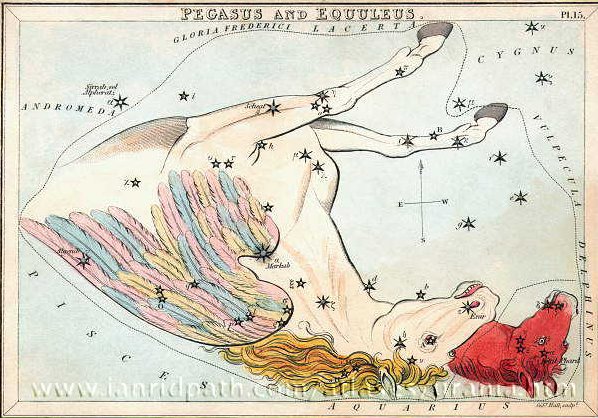
|
tupu te raau i vai oka
hia |
te moko |
te marama |
te kava |
manu kara etahi |
te mauga pu hia |
 |
 |
 |
 |
 |
 |
|
Ca10-22 |
Ca10-23 |
Ca10-24 |
Ca10-25 (280) |
Ca10-26 |
Ca10-27 |
|
CLOSE TO THE SUN: |
|
June 23 |
ST JOHN'S DAY |
25 |
26 (177 = 6 * 29½) |
27 |
28 |
|
... The evening of 23 June, St. John's Eve,
is the eve of celebration before the Feast
Day of Saint John the Baptist. The Gospel of
Luke (Luke 1:36, 56-57) states that John was
born about six months before Jesus;
therefore, the feast of John the Baptist was
fixed on 24 June, six months before
Christmas Eve ...
 |
|
FURUD
= ζ Canis Majoris
(94.9) |
Well-22 (Tapir) /
Arkū-sha-pu-u-mash-mashu-8
(Back of the Mouth of the Twins)
δ
Columbae (95.2),
TEJAT POSTERIOR =
μ
Gemini,
MIRZAM (The Roarer) =
β
Canis Majoris
(95.4),
CANOPUS (Canopy) =
α
Carinae
(95.6),
ε
Monocerotis (95.7),
ψ1
Aurigae (95.9)
*54.0 = *95.4 - *41.4 |
no star
listed (96) |
β Monocerotis, ν Gemini (97.0) |
no star
listed (98) |
ν Puppis (99.2), ψ3 Aurigae (99.4), ψ2
Aurigae (99.5)
*58.0 = *99.4 - *41.4
GEMMA (α Cor. Bor.) |
|
DAY 94 |
95 |
96 |
97 |
98 |
99 |
|
... The Pythagoreans make Phaeton
fall into Eridanus, burning part of its
water, and glowing still at the time when
the Argonauts passed by. Ovid stated that
since the fall the Nile hides its sources.
Rigveda 9.73.3 says that the Great Varuna
has hidden the ocean. The Mahabharata tells
in its own style why the 'heavenly Ganga'
had to be brought down. At the end of the
Golden Age (Krita Yuga) a class of
Asura who had fought against the 'gods'
hid themselves in the ocean where the gods
could not reach them, and planned to
overthrow the government. So the gods
implored Agastya (Canopus, alpha
Carinae = Eridu) for help. The great Rishi
did as he was bidden, drank up the water of
the ocean, and thus laid bare the enemies,
who were then slain by the gods. But now,
there was no ocean anymore! Implored by the
gods to fill the sea again, the Holy One
replied: 'That water in sooth hath been
digested by me. Some other expedient,
therefore, must be thought of by you, if ye
desire to make endeavour to fill the ocean
...
 |
|
CLOSE TO THE
FULL MOON: |
|
Dec 23 |
CHRISTMAS EVE |
25 |
26 (360) |
27 |
28 |
|
... That the Sun-gods
Dionysus, Apollo and Mithras were all also
reputedly born at the Winter solstice is
well known, and the Christian Church first
fixed the Nativity feast of Jesus Christ at
the same season, in the year AD 273 (= 3 *
91). St. Chrysostom, a century later, said
that the intention was that 'while the
heathen were busied with their profane rites
the Christians might perform their holy ones
without disturbance', but justified the date
as suitable for one who was 'the Sun of
Righteousness' ... |
|
Purva Ashadha-20 (Winnowing Basket) |
KAUS BOREALIS = λ
Sagittarii
(279.3) |
ν
Pavonis (280.4),
κ
Cor. Austr.
(280.9)
*239.0 = *280.4 - *41.4 |
Abhijit-22 (Victorious)
θ
Cor. Austr.
(281.0),
VEGA = α Lyrae
(281.8) |
no star listed (282) |
|
KAUS MEDIUS = δ Sagittarii,
κ Lyrae (277.5),
TUNG HAE (Heavenly Eastern Sea) = η
Serpentis
(277.7),
SHAOU PIH (Minor Minister) = φ Draconis
(277.8),
KWEI SHE = χ Draconis
(277.9) |
φ
Oct. (278.1),
KAUS AUSTRALIS =
ε
Sagittarii
(278.3),
ξ
Pavonis (278.4),
AL ATHFAR (The Talons of the Falling Eagle)
= μ Lyrae
(278.6)
*237.0 = *278.4 - *41.4 |
|
'Nov 26 |
27 |
28 |
29 (333) |
30 |
'Dec 1 |
|
DAY 277 |
278 |
279 |
280 |
281 |
282 |
| te inoino |
te tagata |
E inoino |
te inoino |
kua
haga |
|
Haga.
1. Bay, fishing spot. (Figuratively) he haga
o te ákuáku, it is the [evil] spirit's fishing
spot, i.e. a place where they hide waiting for
people to fall under their power. 2. To want, to
love. Ku haga á i te vai, I want water, I am
thirsty. Vanaga. 1. Bay, strait, anchorage, strand,
beach. P Mq.: hana, haka, small bay,
creek, cove. 2. Work, labor, employment, act,
affair, creation, design, state, maker, fashion,
manufacture, occupation, profession; to do, to make,
to construct, to employ, to form, to manufacture, to
fashion, to found, to be busy with; haga rakerake,
crime; tagata haga ei mea, mercenary; haga
no iti, to plot mischief; haga ke, to act
contrary; haga takataka, to disjoin; haga
nui, difficulty, fatigue, to weary; tuhi ki
te haga, to give employment; haga hakahou,
to make over, to renew, recovery; haga koroiti,
to deal prudently; haga nuinui ke, to
overburden. P Pau.: haga, to do, action,
work, a deed. Mgv.: haga, aga, work,
labor. Mq.: hana, haka, action, act,
work, occupation. Ta.: haa, work, to labor,
to make. 3. Agreement, conduct, liking, intention,
desire, will; to resolve, to permit, to endeavor, to
tolerate, to be willing, to wish, to approve;
haga ihoiho, fixed desire; haga mai,
haga no mai, to agree, to hearken favorably;
tae haga, despite, involuntary, to refuse, to
renounce; noho hakahaga, apathy. 4. = haka.
Pau.: haga = haka. 5. Mgv.: haga,
a fish. Mq.: haka, id. 6. Mgv.: haga,
a fishtrap. Sa.: faga, a fish-trap,
bird-cage. Ma.: hanganoa, a small basket for
cooked fish. 7. Mgv.: haga, a measure of a
fathom. Ta.: aa, to measure length. Mq.:
aka, ana, to measure with the arms. Ma.:
whanga, id. Churchill. Hagaava (haga
1 - ava 2), entrance of a harbor. Hagahaga:
1. (haga 2), work. 2. hesitation, to
hesitate. Churchill. |
 |
 |
 |
 |
 |
|
Ca10-28 |
Ca10-29
(284) |
Ca11-1 |
Ca11-2 |
Ca11-3 |
|
CLOSE TO
THE SUN: |
|
June 29 |
30 |
July 1 |
2 |
3 (184) |
|
ψ4 Aurigae (100.5),
MEBSUTA (Outstretched) = ε Gemini
(100.7) |
SIRIUS = α Canis Majoris
(101.2), ψ5 Aurigae (101.4), ν Gemini (101.6), ψ6
Aurigae (101.7)
*60.0 = *101.4 - *41.4 |
τ
Puppis (102.2),
ψ7
Aurigae (102.4)
*61.0 = *102.4 - *41.4 |
Mash-mashu-sha-Risū-9 (Twins of the Shepherd)
θ
Gemini (103.0),
ψ8
Aurigae (103.2),
ALHENA =
γ
Gemini
(103.8),
ψ9
Aurigae (103.9) |
ADARA (Virgins) = ε Canis Majoris
(104.8) |
|
DAY 100 |
101 |
102 |
103 |
104 (= 4
* 26) |
|
CLOSE TO THE FULL
MOON: |
|
Dec 29 |
30 (364) |
31 |
Jan 1 |
2 |
|
ζ
Pavonis (283.4),
λ
Cor. Austr. (283.6),
DOUBLE
DOUBLE = ε Lyrae
(283.7),
ζ
Lyrae (283.8)
*242.0 = *283.4 - *41.4 |
South Dipper-8 (Unicorn)
Φ
Sagittarii
(284.0),
μ
Cor. Austr. (284.6),
η
Cor. Austr.,
θ
Pavonis (284.8) |
SHELIAK
(Tortoise) = β Lyrae,
ν
Lyrae (285.1),
ο
Draconis (285.5).
λ
Pavonis (285.7)
ATLAS (27 Tauri) |
χ
Oct. (286.0),
AIN AL
RAMI (Eye of the Archer) = ν Sagittarii
(286.2),
υ
Draconis (286.4),
δ
Lyrae (286.3),
κ
Pavonis (286.5),
ALYA (Fat Tail) =
θ
Serpentis
(286.6)
*245.0 = *286.4 - *41.4 |
ξ Sagittarii (287.1), ω Pavonis (287.3), ε Aquilae,
ε Cor. Austr.,
SULAPHAT (Little Tortoise Shell) = γ Lyrae
(287.4), λ Lyrae (287.7),
ASCELLA (Armpit) = ζ Sagittarii,
BERED = i Aquilae (Ant.)
(287.9)
*246.0 = *287.4 - *41.4 |
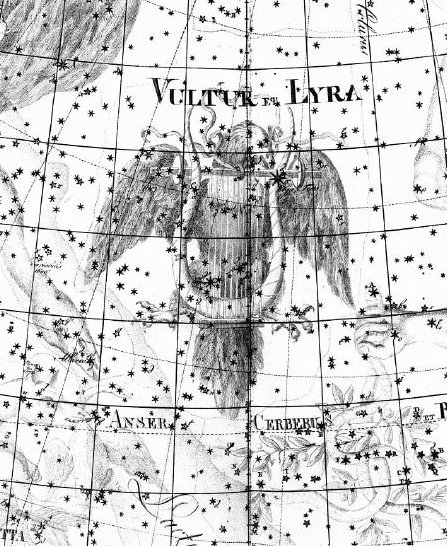 |
|
'Dec 2
(336 = 14 * 24) |
3 |
4 |
5 |
6 |
|
DAY 283 |
284 |
285 (=
365 - 80) |
286 |
287 |
|
tupu te raau i te vai |
te moko |
te marama |
te kava |
manu rere |
te mauga hiku
hia |
|
Tupu. 1.
Shoot, sprout, bud; to sprout, to bud. 2. Pregnant:
vî'e tupu (o te poki); to be conceived (of
fetus in its mother's womb): he-tupu te poki i
roto i te kopú o toona matu'a. Vanaga. To grow,
to sprout, to germinate, to come forth, to conceive,
pregnant, germ; mea tupu, plant; tupu ke
avai, of rapid growth; tupu horahorau,
precocious; hakatupu, to produce, to
stimulate growth, to excite. P Pau.: fakatupu,
to raise up, to create. Mgv.: tupu, to grow,
to conceive, to be pregnant. Mq.: tupu, to
grow, to sprout, to conceive. Ta.: tupu, to
grow, to sprout. Churchill. Mgv.: Tupu, the
best or worst, used of men or of bad qualities. Sa.:
tupu, king. Ma.: tupu, social
position, dignity. Churchill. |
 |
 |
 |
 |
 |
 |
|
Ca11-4 (288) |
Ca11-5 |
Ca11-6 |
Ca11-7 |
Ca11-8 |
Ca11-9 |
|
CLOSE TO
THE SUN: |
|
July 4 |
5 |
6 |
7 |
8 |
9 (190) |
|
ω
Gemini (105.4),
ALZIRR (Button) =
ξ
Gemini
(105.7),
MULIPHEIN (Oaths) =
γ
Canis Majoris
(105.8),
MEKBUDA (Contracted) =
ζ
Gemini
(105.9)
*64.0 = *105.4 - *41.4 |
7h (106.5)
no star listed (106) |
WEZEN (Weight) =
δ
Canis Majoris
(107.1),
τ
Gemini (107.7),
δ
Monocerotis (107.9) |
no star listed (108) |
λ Gemini (109.4),
WASAT (Middle) = δ Gemini
(109.8)
*68.0 = *109.4 - *41.4 |
no star listed (110) |
|
DAY 105 |
106 |
107 |
108 |
109 |
110 |
|
CLOSE TO THE FULL
MOON: |
|
Jan 3 |
4 |
5 |
6 |
7 |
8 |
|
Al Na'ām-18 (Ostriches)
/
Uttara Ashadha-21 (Elephant tusk, small bed)
NUNKI
= σ Sagittarii
(288.4), ζ Cor. Austr. (288.5),
MANUBRIUM = ο Sagittarii
(288.8), ζ Aquilae (288.9)
*247.0 = *288.4 - *41.4 |
19h (289.2)
λ
Aquilae (Ant.) (289.1),
γ
Cor. Austr (289.3),
τ
Sagittarii (289.4),
ι
Lyrae (289.5),
δ
Cor.
Austr. (289.8)
*248.0 = *289.4 - *41.4 |
Al Baldah-19 (City)
AL BALDAH = π Sagittarii,
ALPHEKKA (Dish) MERIDIANA = α Cor. Austr.
(290.1), β Cor. Austr. (290.2) |
ALADFAR = η Lyrae
(291.1),
NODUS II = δ Draconis
(291.5), ψ Sagittarii (291.6), τ Draconis (291.7), θ
Lyrae (291.8) |
ω Aquilae (292.1), ρ Sagittarii (292.6), υ
Sagittarii (292.7) |
π Draconis,
ARKAB PRIOR = β¹ Sagittarii
(293.0),
ARKAB POSTERIOR = β² Sagittarii,
ALRAMI (The Archer) = α Sagittarii
(293.2), χ Sagittarii (293.6) |
|
'Dec 7 |
8 |
9 |
10 |
11 (345) |
12 |
|
DAY 288 |
289 |
290 |
291 |
292 |
293 |
The Navel Button sign of birth (Al-zirr, ξ Gemini, below
the right foot of Pollux) was half a year away compared to the place
where the Sun became 'submerged into water' ('turned into a sub-marine').


| 1 |
Horn |
α Virginis (Spica) |
Crocodile |
Oct 9 (282) |
| 2 |
Neck |
κ Virginis |
Dragon |
Oct 21 (294) |
| 3 |
Root |
α Librae (Zuben Elgenubi) |
Badger |
Oct 31 (304) |
| 4 |
Room |
π Scorpii (Vrischika) |
Hare |
Nov 17 (321) |
| 5 |
Heart |
σ Scorpii |
Fox |
Nov 23 (327) |
| 6 |
Tail |
μ Scorpii (Denebakrab) |
Tiger |
Nov 30 (334) |
| 7 |
Winnowing Basket |
γ Sagittarii (Nash) |
Leopard |
Dec 19 (353) |
| December solstice |
| 8 |
South Dipper |
φ Sagittarii (?) |
Unicorn |
Dec 30 (364) |
| 9 |
Ox / Herd Boy |
β Capricornii (Dabih) |
Buffalo |
Jan 23 (388) |
| 10 |
Girl |
ε Aquarii (Albali) |
Bat |
Jan 29 (394) |
| 11 |
Emptiness |
β Aquarii (Sadalsud) |
Rat |
Feb 9 (405) |
| 12 |
Rooftop |
α Aquarii (Sadalmelik) |
Swallow |
Feb 18 (414) |
| 13 |
House |
α Pegasi (Markab) |
Pig |
Mar 5 (429) |
| March equinox |
| 14 |
Wall |
γ Pegasi (Algenib) |
Porcupine |
Mar 22 (81) |
| 15 |
Legs |
η Andromedae (?) |
Wolf |
Apr 1 (91) |
| 16 |
Bond |
β Arietis (Sheratan) |
Dog |
Apr 17 (107) |
| 17 |
Stomach |
4¹ Arietis (Bharani) |
Pheasant |
May 1 (121) |
| 18 |
Hairy Head |
η Tauri (Alcyone) (?) |
Cockerel |
May 16 (136) |
| 19 |
Net |
ε Tauri (Ain) |
Crow |
May 25 (145) |
| 20 |
Turtle Head |
λ Orionis (Heka) |
Monkey |
Jun 12 (163) |
| 21 |
Three Stars |
ζ Orionis (Alnitak) |
Gibbon |
Jun 13 (164) |
| June solstice |
| 22 |
Well |
μ Gemini (Tejat Posterior) |
Tapir |
Jun 24 (175) |
| 23 |
Ghost |
ρ Gemini ? |
Goat |
Jul 11 (192) |
| 24 |
Willow |
δ Hydrae |
Stag |
Jul 28 (209) |
| 25 |
Star |
α Hydrae (Alphard) |
Horse |
Aug 10 (222) |
| 26 |
Extended Net |
ε Hydrae / μ Hydrae |
Ox |
Jul 30 (211) / Aug 25 (237) |
| 27 |
Wings |
α Crateris (Alkes) |
Snake |
Sep 2 (245) |
| 28 |
Chariot |
γ Corvi (Gienah) |
Worm |
Sep 22 (265) |
| September equinox |
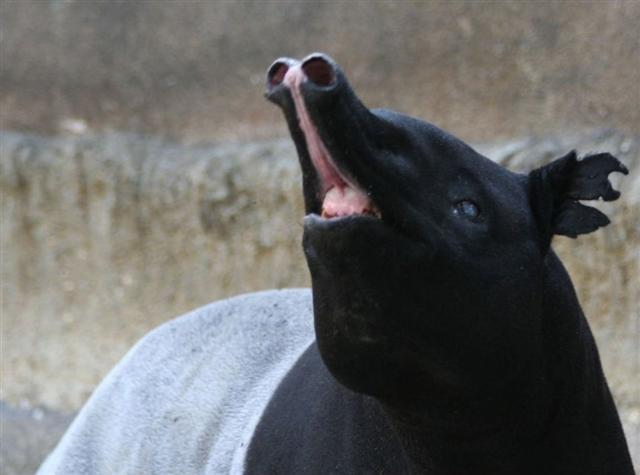
|

